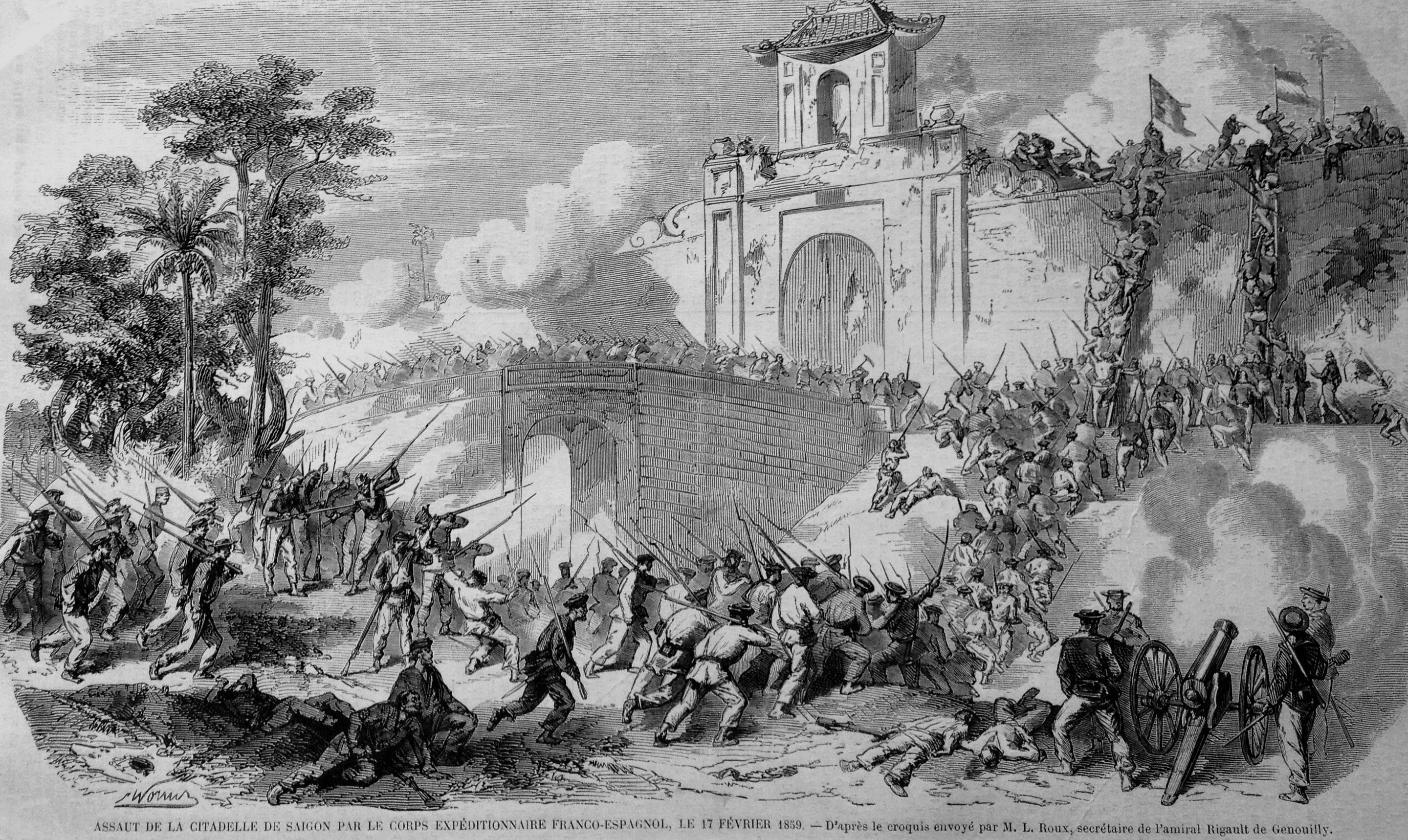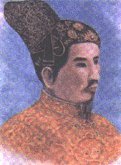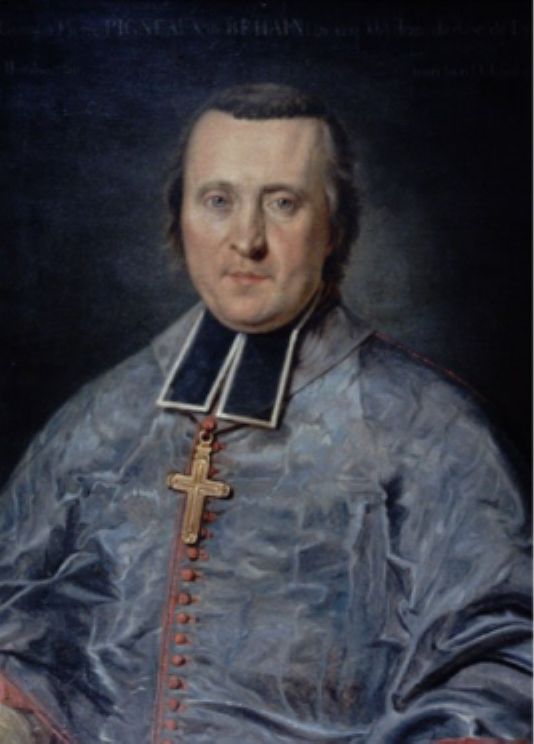|
─Éa Kao
─Éa Kao is a ward () of District 1 in Ho Chi Minh City, Vietnam. Geography ─Éa Kao Ward located in the north of District 1, borders to: * Bß║┐n Ngh├® Ward to the east by Nguyß╗ģn Thß╗ŗ Minh Khai Street * T├ón ─Éß╗ŗnh Ward to the west by streets of V├Ą Thß╗ŗ S├Īu and ─Éinh Ti├¬n Ho├Āng (stretch leading to B├┤ng Bridge) * V├Ą Thß╗ŗ S├Īu Ward, District 3 to the south by Hai B├Ā TrŲ░ng Street * Ward 1, 2 and 17, B├¼nh Thß║Īnh District to the north by Nhi├¬u Lß╗Öc ŌĆō Thß╗ŗ Ngh├© Channel. The ward has an area of 0,99 km┬▓, with the total population is 21.579 people, and population density is 21.467 person/km┬▓, in 2023. History The ─Éa Kao area was originally called by a Vietnamese name that has meaning as ''─Éß║źt Hß╗Ö'' (quartier land or land managed by quartier). Quartier (''Hß╗Ö'') was an administrative unit that existed during the period when the cities of Saigon (changed from Bß║┐n Ngh├®) and Chß╗Ż Lß╗øn were merged into the Saigon ŌĆō Cholon region (R├®gion de Saigon ŌĆō Ch ... [...More Info...] [...Related Items...] OR: [Wikipedia] [Google] [Baidu] |
Ward (Vietnam)
Ward () is a type of third tier subdivision of Vietnam. It has equal status with township and commune. As of 13 December 2023, Vietnam has a total of 1,780 wards. According to hierarchy of Vietnamese administrative unit, Wards are subordinate to urban district, city or town as the Third Tier unit. Currently, to manage the urban areas and their associating families, each ward is divided into neighborhoods (; ), with each neighborhood the most basic organization of population. Ho Chi Minh City (Saigon) has 249 wards and Hanoi Hanoi ( ; ; ) is the Capital city, capital and List of cities in Vietnam, second-most populous city of Vietnam. The name "Hanoi" translates to "inside the river" (Hanoi is bordered by the Red River (Asia), Red and Black River (Asia), Black Riv ... has 175 wards. References {{Subdivisions of Vietnam Subdivisions of Vietnam Vietnam 3 Ward, Vietnam ... [...More Info...] [...Related Items...] OR: [Wikipedia] [Google] [Baidu] |
French Colonial Vietnam
French Indochina (previously spelled as French Indo-China), officially known as the Indochinese Union and after 1941 as the Indochinese Federation, was a group of French dependent territories in Southeast Asia from 1887 to 1954. It was initially a federation of French colonies (1887ŌĆō1949), later a confederation of French associated states (1949ŌĆō1954). It comprised Cambodia, Laos (from 1899), Guangzhouwan (1898ŌĆō1945), Cochinchina, and Vietnamese regions of Tonkin and Annam. It was established in 1887 and was dissolved in 1954. In 1949, Vietnam was reunited and it regained Cochinchina. Its capitals were Hanoi (1902ŌĆō1945) and Saigon (1887ŌĆō1902, 1945ŌĆō1954). The Second French Empire colonized Cochinchina in 1862 and established a protectorate in Cambodia in 1863. After the French Third Republic took over northern Vietnam through the Tonkin campaign, the various protectorates were consolidated into one union in 1887. Two more entities were incorporated into the union: ... [...More Info...] [...Related Items...] OR: [Wikipedia] [Google] [Baidu] |
Jade Emperor Pagoda
The Jade Emperor Pagoda (Vietnamese: ''Ch├╣a Ngß╗Źc Ho├Āng''; name: ''Ngß╗Źc Ho├Āng ─Éiß╗ćn,'' ńÄēńÜ浫┐, "Jade Emperor Hall", French: Temple Da Kao) also known as the PhŲ░ß╗øc Hß║Żi Tß╗▒ (Vietnamese: ''Ch├╣a PhŲ░ß╗øc Hß║Żi''; ń”ŵĄĘÕ»║, "Luck Sea Temple") is a Taoist, Buddhist, Confucian pagoda located at 73 Mai Thß╗ŗ Lß╗▒u Street, ─Éa Kao, District 1, Ho Chi Minh City, Vietnam. It was founded by a Chinese merchant named Liu Daoyuan (ÕŖēķüōµ║É, LŲ░u Minh or LŲ░u ─Éß║Īo Nguy├¬n), a Cantonese migrant. It is also known from 1984 by the new Buddhist name PhŲ░ß╗øc Hß║Żi Tß╗▒ (ń”ŵĄĘÕ»║, "Luck Sea Temple"). Then U.S. President Barack Obama Barack Hussein Obama II (born August 4, 1961) is an American politician who was the 44th president of the United States from 2009 to 2017. A member of the Democratic Party, he was the first African American president in American history. O ... paid a visit to the pagoda during his state trip to Vietnam on 22 May 2016. References Pagod ... [...More Info...] [...Related Items...] OR: [Wikipedia] [Google] [Baidu] |
Tß╗▒ ─Éß╗®c
Tß╗▒ ─Éß╗®c (, vi-hantu, :wikt:ÕŚŻ, ÕŚŻ:wikt:ÕŠĘ, ÕŠĘ, , 22 September 1829 ŌĆō 19 July 1883) (personal name: Nguyß╗ģn Ph├║c Hß╗ōng Nhß║Łm, also Nguyß╗ģn Ph├║c Th├¼) was the fourth emperor of the Nguyß╗ģn dynasty of Vietnam, and the country's last pre-colonial monarch. Ruling for about 36 years from 1847 to 1883, this made him the longest reigning Nguyß╗ģn emperor. Biography Prince Nguyß╗ģn Ph├║c Hß╗ōng Nhß║Łm was born on 22 September 1829. He was a son of the emperor Thiß╗ću Trß╗ŗ and succeeded his father as emperor of Vietnam in 1847 as ''Tß╗▒ ─Éß╗®c''. Family troubles, however, plagued the beginning of his reign. Thiß╗ću Trß╗ŗ had passed over his more moderate eldest son Nguyß╗ģn Ph├║c Hß╗ōng Bß║Żo, Hß╗ōng Bß║Żo, in favour of Tß╗▒ ─Éß╗®c, known for his staunch Confucianism and opposition to foreigners and innovation. As a result and due to the repressive policies of the previous emperor, there was now a great deal of dissatisfaction with Nguyß╗ģn rule and a legitimate royal f ... [...More Info...] [...Related Items...] OR: [Wikipedia] [Google] [Baidu] |
South Vietnam
South Vietnam, officially the Republic of Vietnam (RVN; , VNCH), was a country in Southeast Asia that existed from 1955 to 1975. It first garnered Diplomatic recognition, international recognition in 1949 as the State of Vietnam within the French Union, with its capital at Saigon, before becoming a republic in 1955, when the southern half of Vietnam was a member of the Western Bloc during part of the Cold War after the 1954 Geneva Conference, 1954 division of Vietnam. South Vietnam was bordered by North Vietnam (Democratic Republic of Vietnam) to the north, Kingdom of Laos, Laos to the northwest, Khmer Republic, Cambodia to the southwest, and Thailand across the Gulf of Thailand to the southwest. Its sovereignty was recognized by the United States and 87 other nations, though it failed to gain admission into the United Nations as a result of a Soviet Union, Soviet veto in 1957. It was succeeded by the Provisional Revolutionary Government of the Republic of South Vietnam, Rep ... [...More Info...] [...Related Items...] OR: [Wikipedia] [Google] [Baidu] |
Minh Mß║Īng
Minh Mß║Īng (), also known as Minh Mß╗ćnh (, vi-hantu, µśÄ ÕæĮ, lit. "the bright favour of Heaven"; 25 May 1791 ŌĆō 20 January 1841; born Nguyß╗ģn Ph├║c ─Éß║Żm, also known as Nguyß╗ģn Ph├║c Kiß╗āu), was the second emperor of the Nguyß╗ģn dynasty of Vietnam, reigning from 14 February 1820 until his death, on 20 January 1841. He was the fourth son of Emperor Gia Long, whose eldest son, Nguyß╗ģn Ph├║c Cß║Żnh, had died in 1801. He was well known for his opposition to French involvement in Vietnam, completing the final Vietnamese conquest of Champa, temporary annexation of Cambodia, and his rigid Confucian orthodoxy. Early years Born Nguyß╗ģn Ph├║c ─Éß║Żm at Gia ─Éß╗ŗnh in the middle of the Second T├óy SŲĪn ŌĆō Nguyß╗ģn War, Minh Mß║Īng was the fourth son of lord Nguyß╗ģn Ph├║c ├ünh ŌĆō future Emperor Gia Long. His mother was Gia Long's second wife Trß║¦n Thß╗ŗ ─Éang, later known as the empress Thuß║Łn Thi├¬n. At the age of three, under the effect of a written agreement ... [...More Info...] [...Related Items...] OR: [Wikipedia] [Google] [Baidu] |
Citadel Of Saigon
The Citadel of Saigon ( ) also known as the Citadel of Gia ─Éß╗ŗnh (; Chß╗» H├Īn: ÕśēÕ«ÜÕ¤Ä ) was a late 18th-century fortress that stood in Saigon (also known in the 19th century as Gia ─Éß╗ŗnh, now Ho Chi Minh City), Vietnam from its construction in 1790 until its destruction in February 1859. The citadel was involved in two wars prior to its destruction, first when it was captured by L├¬ V─ān Kh├┤i in 1833 and used in a revolt against Emperor Minh Mß║Īng, then recaptured in 1835. In 1859, it was captured following a French Navy, French naval bombardment and then destroyed, as part of the Cochinchina Campaign, colonization of southern Vietnam which became the French colony of Cochinchina. In the late 18th century, the city of Saigon was the subject of warfare between the T├óy SŲĪn dynasty, which had toppled the Nguyß╗ģn lords who ruled southern Vietnam, and Gia Long, Nguyß╗ģn ├ünh, the nephew of the last Nguyß╗ģn lord. The city changed hands multiple times before Nguyß╗ģn ├ünh ... [...More Info...] [...Related Items...] OR: [Wikipedia] [Google] [Baidu] |
Gia Long
Gia Long (Chß╗» H├Īn, Chß╗» h├Īn: ÕśēķÜå) ( (''Hanoi, North''), (''Ho Chi Minh City, South''); 8 February 1762 ŌĆō 3 February 1820), born Nguyß╗ģn Ph├║c ├ünh (ķś«ń”ŵÜÄ) or Nguyß╗ģn ├ünh (ķś«µÜÄ), was the founding emperor of the Nguyß╗ģn dynasty, the last List of Vietnamese dynasties, dynasty of Vietnam, which would rule the unified territories that constitute modern-day Vietnam until 1945. A nephew of the last Nguyß╗ģn lords, Nguyß╗ģn lord who ruled over ─É├Āng Trong, south Vietnam, Nguyß╗ģn ├ünh was forced into hiding in 1777 as a 15-year-old when his family was slain in the T├óy SŲĪn T├óy SŲĪn wars, revolt. After several changes of fortune in which his loyalists regained and again lost Saigon, he befriended the French Catholic Church, Catholic Bishop Pierre Pigneau de Behaine. Pigneau championed Nguyß╗ģn ├ünh's cause to regain the throne to the French government and managed to recruit volunteer; however, that soon fell through. From 1789, Nguyß╗ģn ├ünh was once again in the ... [...More Info...] [...Related Items...] OR: [Wikipedia] [Google] [Baidu] |
Gia ─Éß╗ŗnh
''Gia'' is a 1998 American biographical drama television film about the life and times of one of the first supermodels, Gia Carangi. The film stars Angelina Jolie as Gia and Faye Dunaway as Wilhelmina Cooper, with Mercedes Ruehl and Elizabeth Mitchell. It was directed by Michael Cristofer and written by Cristofer and Jay McInerney. The original music score was composed by Terence Blanchard. The film premiered on January 31, 1998 on HBO. Plot Gia Carangi is a Philadelphia native who moves to New York City to become a fashion model and immediately catches the attention of the powerful agent Wilhelmina Cooper. Gia's attitude and beauty help her rise quickly to the forefront of the modeling industry. However, her persistent loneliness, especially after the death of Wilhelmina, drives her to use mood-altering drugs such as cocaine and heroin. She becomes entangled in a passionate affair with Linda, a make-up artist. Their love affair first starts when both pose nude for a ... [...More Info...] [...Related Items...] OR: [Wikipedia] [Google] [Baidu] |
Fu (administrative Division)
Fu () is a traditional administrative division of Chinese origin used in the East Asian cultural sphere, translated variously as commandery, prefecture, urban prefecture, or city. They were first instituted as a regular form of administrative division of China's Tang Empire, but were later adopted in Vietnam, Japan and Korea. At present, only two ''fu'' still remain: the prefectures of Kyoto and Osaka in Japan. The term ''fu'' is currently also used in Chinese to translate the provinces of Thailand, but not those of mainland China, Taiwan or other countries. Meaning ''Fu'' (Õ║£) means an office or a command institution. The character appears in the Chinese words for "government" (µö┐Õ║£, ''zh─ŚngfŪö'') or "official's residence" (Õ║£ķéĖ, ''fŪödŪÉ''), and names of official institutions such as the " Imperial Household Department" (Õģ¦ÕŗÖÕ║£, ''N├©iw├╣fŪö'') in China or " Office of the President" (ńĖĮńĄ▒Õ║£, ''ZŪÆngtŪÆngfŪö'') in Taiwan. The Japanese language uses the Chinese ... [...More Info...] [...Related Items...] OR: [Wikipedia] [Google] [Baidu] |
Nguyß╗ģn Dynasty
The Nguyß╗ģn dynasty (, chß╗» N├┤m: Ķī╣ķś«, chß╗» H├Īn: µ£Øķś«) was the last List of Vietnamese dynasties, Vietnamese dynasty, preceded by the Nguyß╗ģn lords and ruling unified Vietnam independently from 1802 until French protectorate in 1883. Its emperors were members of the House of Nguyß╗ģn Ph├║c. During its existence, the Nguyß╗ģn empire expanded into modern-day Southern Vietnam, Cambodia, and Laos through a continuation of the centuries-long Nam tiß║┐n and SiameseŌĆōVietnamese wars. With the French conquest of Vietnam, the Nguyß╗ģn dynasty was forced to give up sovereignty over parts of French Cochinchina, Southern Vietnam to France in 1862 and 1874, and after 1883 the Nguyß╗ģn dynasty only nominally ruled the French protectorates of Annam (French protectorate), Annam (Central Vietnam) as well as Tonkin (French protectorate), Tonkin (Northern Vietnam). Backed by Empire of Japan, Imperial Japan, in 1945 the last Nguyß╗ģn emperor Bß║Żo ─Éß║Īi abolished the protectorate treat ... [...More Info...] [...Related Items...] OR: [Wikipedia] [Google] [Baidu] |
Tre Publishing House
Tre Publishing House () is a book and magazine publisher in Vietnam. Publications A large part of books published by Tre Publishing House are those about generic life topics; however, it is their fiction books that the company is most well known for. Tre Publishing House has published work by contemporary Vietnamese authors such as Nguyß╗ģn Nhß║Łt ├ünh and Nguyß╗ģn Ngß╗Źc TŲ░. The company has published work by foreign authors to Vietnam including Mario Puzo (''The Godfather''), Paul Auster, Thomas Mann, J. K. Rowling (''Harry Potter''), etc. * '' Vß╗½a nhß║»m mß║»t vß╗½a mß╗¤ cß╗Ła sß╗Ģ'' (2004) * '' C├Īnh ─æß╗ōng bß║źt tß║Łn'' (2005) * '' T├┤i l├Ā B├¬t├┤'' (2007) * '' Cho t├┤i xin mß╗Öt v├® ─æi tuß╗Ģi thŲĪ'' (2008) * '' Nß╗» thß║¦n b├Īo tß╗Ł'' (dß╗ŗch phß║®m, 2012) * ''Nh├│c Miko!'' (Manga, 2011) * ''Skip Beat!'' (Manga, 2013) Since the end of 2012, Tre Publishing House has distributed e-book versions of published publications through one of its member unit - YBOOK, (full nam ... [...More Info...] [...Related Items...] OR: [Wikipedia] [Google] [Baidu] |



